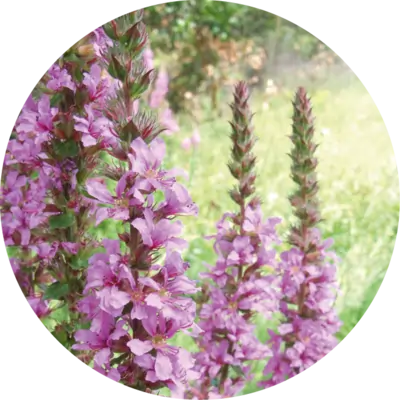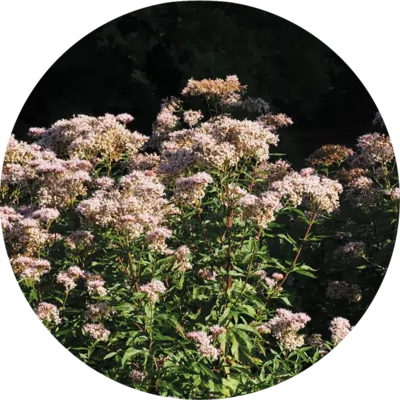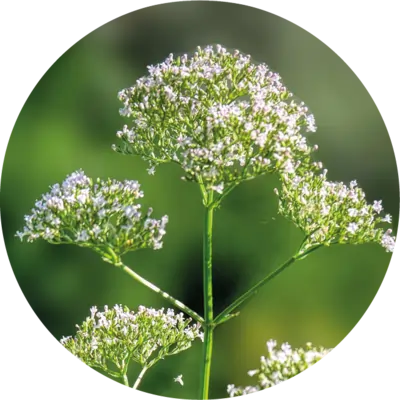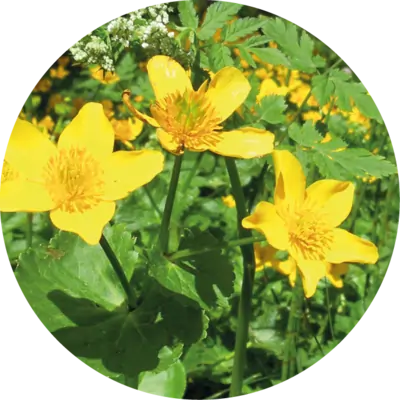Colourful spectacle – more than just butterfly oases
Tall herbaceous medows (megaphorbs) develop often in areas that have had little or no human intervention. These include forest edges, former wet meadows and edges of water bodies. These locations are characterised by nitrogen-rich soils and lush vegetation dominated by tall, perennial, herbaceous plants.
In summer, the plants flourish in great variety, making the meadows particularly flower-rich habitats. The flora can vary greatly depending on the site, but the common feature is the lush, multi-coloured flowerage. Due to natural succession, the gradual change in vegetation, tall herbaceous meadows are oft en overgrown by trees and subsequently become forest. Thus, tall herbaceous meadows represent a short-lived transitional state in nature that offers a fascinating insight into the dynamics of landscapes.
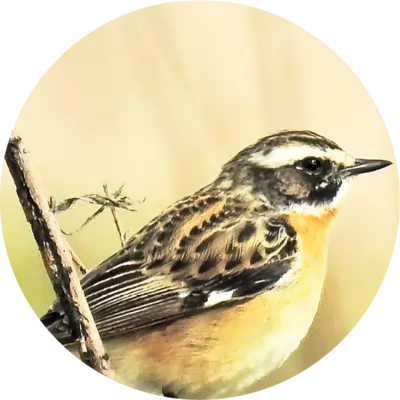
Whinchat
Bird species such as whinchat, common reed bunting and marsh warbler lay their nests in tall herbaceous margins and catch insects there to raise their young.

Violet copper
Butterflies seek out the flower-rich tall perennials for nectar. They prefer wind-protected, sunny locations. The flight radius of the butterflies is usually narrow.
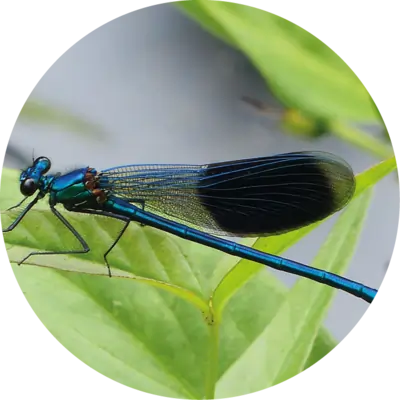
Banded demoiselle
Dragonflies use the tall herbaceous meadows as perches in their territory and, especially the young, use them for mating flight. Without them, dragonflies would lose their habitat along watercourses.
Tall herbaceous meadows
- have a high density of individuals and species of insects.
- preserve habitats along watercourses, especially for dragonfl ies.
- connect habitats so that animals can migrate to more distant areas despite hostile agricultural landscapes.
